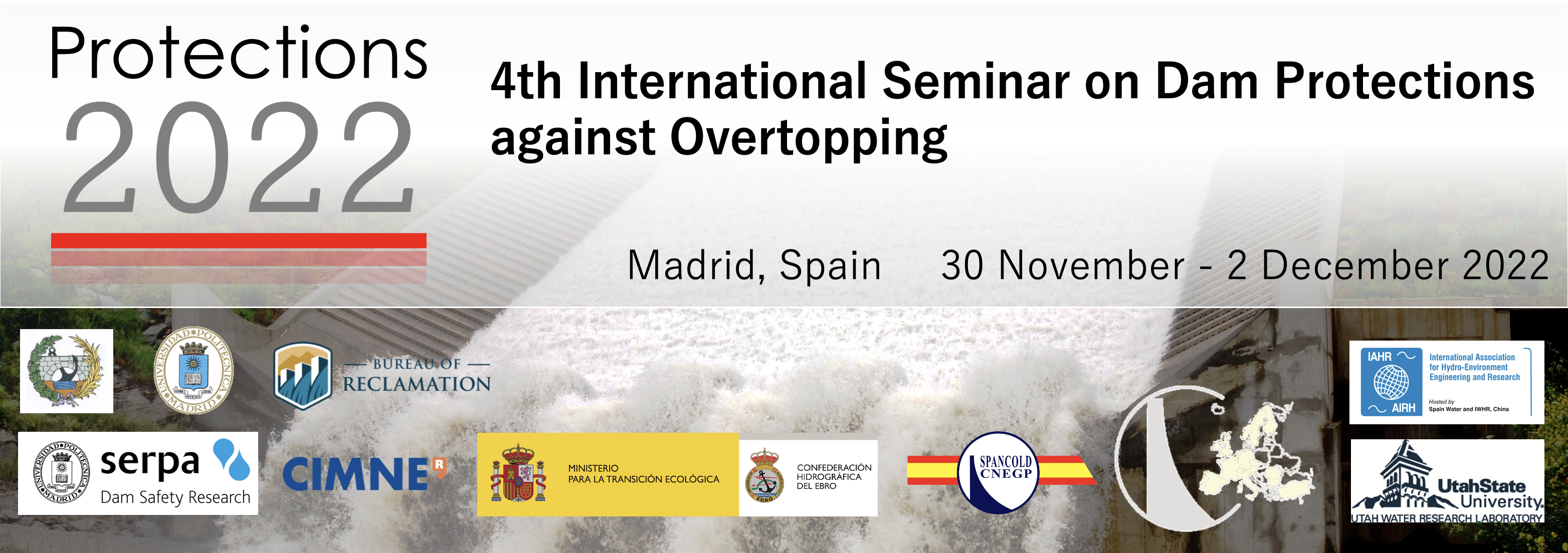Session
Session 2
Start Date
11-30-2022 12:55 PM
Description
Overtopping protection using roller-compacted concrete (RCC) overlays is a common improvement made to address hydrologic deficiencies at existing small- to medium-height embankment dams. Overlays allow floods to pass over the dam while preventing erosion of the original embankment. The United States has many examples of such projects on both private and public dams, including many associated with federal agencies of the Departments of the Interior and Agriculture. For one project modified with an overlay in 1993, deterioration of the RCC and poor bonding between lifts has caused concern for stability of the 0.3-m (1-ft) thick RCC lifts that cap the dam. Analytical studies from 2013 to the present have assessed potential failure modes during overtopping flow and have produced widely varying estimates of the probability of failure. To address this uncertainty, physical scale modeling in the Bureau of Reclamation Hydraulics Laboratory was used to evaluate crest cap failure modes for the conservative condition of unbonded RCC lifts. The testing defines the threshold conditions for failure, which will enable effective evaluation of risk for similar facilities in the future.
Creative Commons License

This work is licensed under a Creative Commons Attribution-Noncommercial-No Derivative Works 4.0 License.
Included in
Failure Thresholds for RCC Crest Caps
Overtopping protection using roller-compacted concrete (RCC) overlays is a common improvement made to address hydrologic deficiencies at existing small- to medium-height embankment dams. Overlays allow floods to pass over the dam while preventing erosion of the original embankment. The United States has many examples of such projects on both private and public dams, including many associated with federal agencies of the Departments of the Interior and Agriculture. For one project modified with an overlay in 1993, deterioration of the RCC and poor bonding between lifts has caused concern for stability of the 0.3-m (1-ft) thick RCC lifts that cap the dam. Analytical studies from 2013 to the present have assessed potential failure modes during overtopping flow and have produced widely varying estimates of the probability of failure. To address this uncertainty, physical scale modeling in the Bureau of Reclamation Hydraulics Laboratory was used to evaluate crest cap failure modes for the conservative condition of unbonded RCC lifts. The testing defines the threshold conditions for failure, which will enable effective evaluation of risk for similar facilities in the future.


